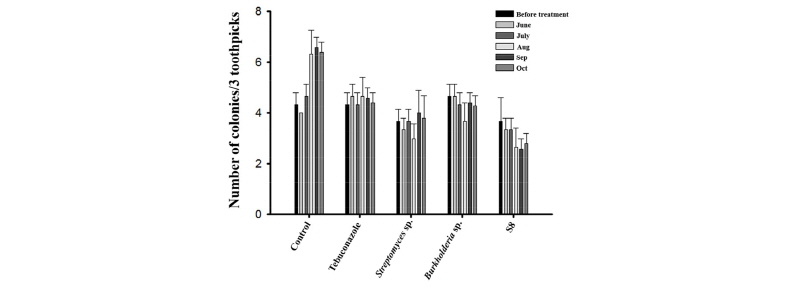Abstract
To prevent large patch disease, caused by Rhizoctonia solani AG-2-2, in zoysiagrass a fungicide, Tebuconazole and three microbial agents Streptomyces sp. Burkholderia sp. and Streptomyces sp. S8 were applied in commercial turfgrass cultivation field in Sanchung, Gyeongnam, Korea. All treatments showed 50% reduced the pathogen population in thatch layer throughout the yearly cultivation period. Not only reduced the pathogen population, Tebuconazole, Streptomyces sp. Burkholderia sp. and Streptomyces sp. S8 treatment also enhanced turfgrass growth, chlorophyll and proline content. Malondialdehyde contents in each treatment was reduced from 6.2~28.9% when compared with the control. Taken together, reduction of pathogen population in soil lowered the disease incidence or severity, and allowed the turfgrass developed as normal condition. The results suggested that the selected microbial agents may use as biological control and growth promotion agents for the Zoysia turfgrass.
Acknowledgements
This research was supported by the “Cooperative Research Program for Agriculture Science & Technology Development (PJ01101201) from Rural Development Administration of Korea.
Figures & Tables

Population density of Rhizoctonia spp. at cultivation fields in Sancheong. Statistical analysis with Tukey’s HSD (p=0.05). Error bars represent the standard deviation of three replicates.


